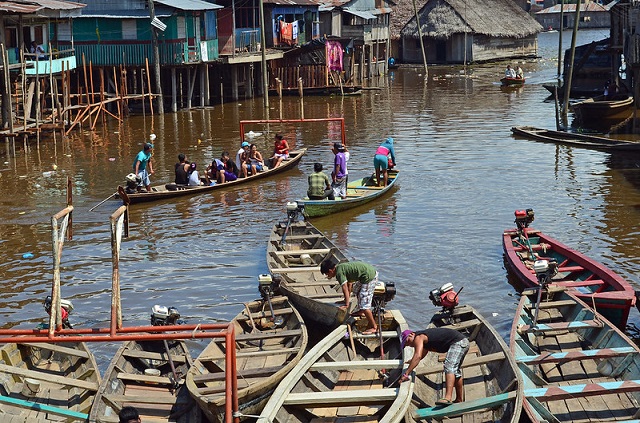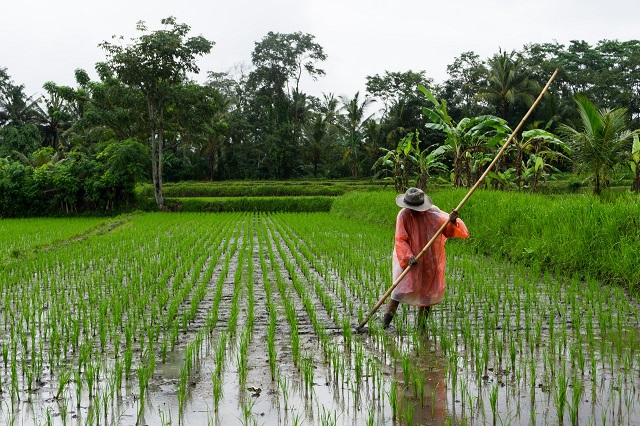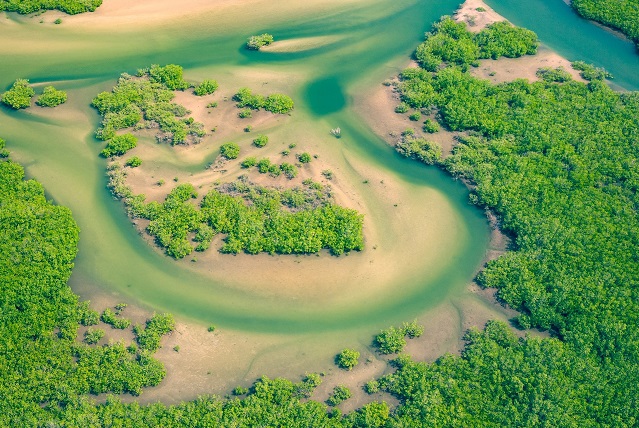
The climate change crisis continues to create unprecedented risk for humanity. Extreme weather threatens food security, increases poverty and inequality and contributes to the spread of disease. Now, also faced with the economic fallout from COVID-19, billions of people are struggling to adapt and survive to both crises.
These threats are interconnected: both crises affect the health, wellbeing and livelihood of people worldwide, particularly vulnerable populations. As a result, investments in recovery should address both threats. Already, some governments are addressing both climate change and COVID-19 by incorporating climate action into their recovery plans. However, these “green” recovery plans often leave out one key element: resilience.
That’s why this week, WRI is collaborating with dozens of organizations and partners of the Global Commission on Adaptation for Adaptation Week to highlight the need for a climate-resilient recovery.
A climate-resilient recovery is one that manages increasingly dangerous climate impacts that threaten people’s lives and livelihoods, such as extreme weather events. This approach brings about a myriad of benefits on top of addressing climate change. For example, incorporating climate resilience into COVID-19 stimulus packages can deliver strong economic returns, address underlying drivers of inequality and poverty, fight biodiversity loss and reduce the spread of infectious disease.
As the world responds to the pandemic, governments can use a climate-resilient recovery to forge a new path that makes the world more resilient, more equitable, healthier and stronger. After the pandemic, governments should continue to build resilience into their development plans and budgets, as doing so will address multiple threats in a way that protects people from future disasters and stimulates the economy.
World Resources Institute, as a managing partner of the Global Commission on Adaptation, seeks to accelerate adaptation action and support globally, especially in the context of COVID-19.
Here are five key aspects of a climate-resilient recovery and how the Global Commission on Adaptation is working to advance them:
1. Leadership from Local Actors and Communities
While communities are at the frontlines of climate change impacts, they rarely have a voice in the actions that most affect them. Recognizing the role of local expertise in disaster response and promoting grassroots perspectives in decision-making processes can lead to innovative, resilient and long-lasting adaptation measures for everyone.
With this in mind, the Kenyan government created County Climate Change Funds (CCCFs) to give subnational authorities and communities the resources they need to build resilience. The move accelerated adaptation to the local level, which jumpstarted action, strengthened local resilience to water stress and enabled communities to manage the projected climate risks of intensifying floods and droughts.
Through its Locally Led Action Track, the Global Commission on Adaptation developed a set of principles for locally led adaptation action that funders, intermediaries, governments and organizations can use to develop a strong climate finance architecture. These principles include devolving decision-making where appropriate so that local actors have access to resources and decision-making power over prioritizing, designing and implementing adaptation actions; addressing structural inequalities, including gender inequality; and ensuring transparency and accountability. The Commission is seeking endorsement of the principles at the Climate Adaptation Summit in January 2021.
2. Improved Food Security and Rural Livelihoods

Climate change is harming the livelihoods of vulnerable smallholder producers and exacerbating food insecurity. The 500 million small-scale producers in developing countries face the greatest challenges of surviving these climate shocks, as they are often the most exposed to climate impacts and have the least access to resources.
To increase resilience measures among smallholder producers, WRI is focusing on two solutions: Supporting the demand-driven scale of research and innovation for climate-resilient food systems, and developing an investment blueprint for scaling digital advisories to empower 300 million small-scale agricultural producers. Both solutions focus on scalable technologies that can help smallholder producers maximize productivity while managing increasing climate risks.
A new paper outlines ways to improve climate services – such as online platforms, software programs and modeling systems – to support building long-term resilience. In Tanzania and Malawi, for example, vulnerable communities are improving agricultural decision-making through analyzing seasonal and sub-seasonal weather forecasts and agricultural advice.
3. Use of Nature-based Solutions
Healthy ecosystems underpin whole economies and societies: They provide food and fuel, deliver economic gains, support livelihoods, fight climate change and even protect against natural disasters. Despite the powerful case for working with nature to reduce climate risks, the world has barely realized the potential of nature-based solutions.
However, a few countries are already taking advantage of this potential and seeing benefits. For example, the Great Green Wall Initiative in the Sahel and West Africa restored 15 million hectares (37 million acres) in Ethiopia and planted 11.4 million trees in Senegal, helping improve food security, watershed management and rural development.

Through its Nature-Based Solutions Action Track, the Global Commission on Adaptation is bringing much-needed attention to nature’s largely untapped role in adaptation. Additionally, WRI’s Cities4Forests project and Resilient Cities Action Track is supporting efforts to scale investment in trees, forests and green infrastructure in cities.
4. Improved Water Access in Cities
Access to safe, affordable and reliable water and sanitation services is fundamental to human health and economic productivity. Yet, 2.2 billion people lack access to safely managed drinking water, 4.2 billion people lack access to safely managed sanitation and 3 billion people lack basic handwashing facilities. Climate change, growing urban populations and the economic fallout of COVID-19 all exacerbate this issue.
To address these and similar challenges, governments must help cities simultaneously recover from COVID-19 and build a more resilient, inclusive future. Beginning in 2020, WRI and partners – with support from the German Federal Ministry of Economic Cooperation and Development (BMZ) – launched the Africa Urban Water Resilience Initiative. Through the initiative, WRI researches urban water resilience challenges and solutions, partners with cities to develop urban water resilience action plans and mobilizes collective action to improve enabling environments.
5. Integrating Climate Risks and Adaptation into Decision-making
Research by the Global Commission makes a strong economic case for resilience: the benefit-to-cost ratios for climate-adaptation investments range from 2:1 to 10:1. Yet, money is not flowing at the necessary scale to build resilience. Only 21% of climate finance mobilized by the world’s most developed countries in 2018 aimed to help communities adapt to climate change.
Better managing the macroeconomic, fiscal and financial risks of climate change will make people and economies more resilient to climate impacts, especially in the most vulnerable countries. In support of the Commission’s Finance Action Track, WRI will be launching a long-term capacity-building program to support governments – particularly planning, economic and finance ministries – to systematically integrate climate risks and adaptation across their operations. Doing so will build climate risk and adaptation into all investment, budgeting and policy decisions from the beginning.
Additionally, WRI is analyzing countries’ COVID-19 recovery plans to determine whether governments have incorporated climate risks, adaptation and resilience into announced stimulus packages, how climate risks are considered and potential opportunities for policymakers to do more in subsequent rounds of policies and investments. This analysis – which will be available in early 2021 – and the Commission’s capacity-building program would come at a time when mainstreaming adaptation finance is more important than ever, as the pandemic puts even greater pressure on limited resources.
Building a More Resilient Future
With the dual threats of COVID-19 and climate change, addressing underlying causes of vulnerability, supporting risk reduction and building resilience has never been more important or urgent. Governments worldwide will invest over $12 trillion in crisis relief this year, yet so far, most stimulus packages have not incorporated climate adaptation into recovery plans. A resilient recovery is within reach, but changing course is the only way to emerge stronger from this crisis.
Climate adaptation brings multiple benefits to people, the economy and the environment. Now, it’s up to governments to take advantage of these benefits by incorporating climate adaptation into their COVID-19 recovery plans.
For more information, read the Global Commission on Adaptation’s Call to Action for a Climate-Resilient Recovery from COVID-19 [July 2020].
This blog was originally published on WRI’s Insights.
Christina Chan is the Director for the Climate Resilience Practice at World Resources Institute.






